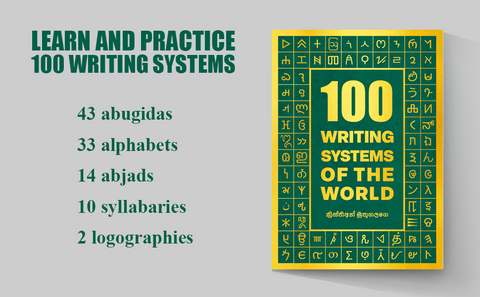Unveiling the Beauty of the Burmese Script: A Journey into Myanmar's Linguistic Heritage
1. The Burmese script is an abugida, a writing system in which consonant-vowel units are combined to form syllables. Each character represents a consonant sound with an inherent vowel sound "a."
2. Writing direction: The Burmese script is traditionally written from left to right, with each syllable forming a compact unit.
3. Creator and invention time: The Burmese script is attributed to King Anawrahta, who introduced it in the 11th century during the Pagan Kingdom in present-day Myanmar.
4. Time period of use: The Burmese script has been used for over 900 years, serving as the dominant writing system in Myanmar.
5. Population and current usage: The Burmese script is actively used by the majority of the population in Myanmar, serving as the official script for the Burmese language.
6. Languages associated: The Burmese script is primarily associated with the Burmese language, the official language of Myanmar. However, it has also been adapted to write other ethnic minority languages in the country.
Interesting Facts:
- The Burmese script consists of circular and curved characters, influenced by the Indian Brahmi script. The circular shape of the characters is said to reflect the Buddhist concept of endless cycles of birth and rebirth.
- It is an abugida, where the inherent vowel sound "a" is understood unless modified by diacritic marks or combined with other consonants.
- The Burmese script has undergone several reforms throughout history to simplify its characters and improve legibility.
- In the past, Burmese manuscripts were traditionally written on palm leaves and bound together as book-like structures called "parabaiks."
- The Burmese script played a crucial role in preserving Myanmar's rich literary and religious traditions, including Buddhist scriptures, historical texts, and folk tales.
The Burmese script stands as a testament to Myanmar's vibrant cultural heritage and the country's deep connection to Buddhism. Its elegant and flowing characters are a visual reflection of the nation's history and traditions. As Myanmar continues to evolve, the Burmese script remains a symbol of national identity and pride, serving as a bridge between the past and the future.

Practice Burmese and other scripts with our book "100 Writing Systems of the World"!
Discover 100 diverse writing systems from around the globe in one captivating book. Practice writing different scripts with full character charts and essential information provided. Let your imagination soar on the blank right pages as you explore 43 abugidas, 33 alphabets, 14 abjads, 10 syllabaries, and 2 logographic scripts. Dive into numeral systems and even design your own writing system. Immerse yourself in the beauty and diversity of global scripts today with "100 Writing Systems of the World." Unleash your creativity and order now!
